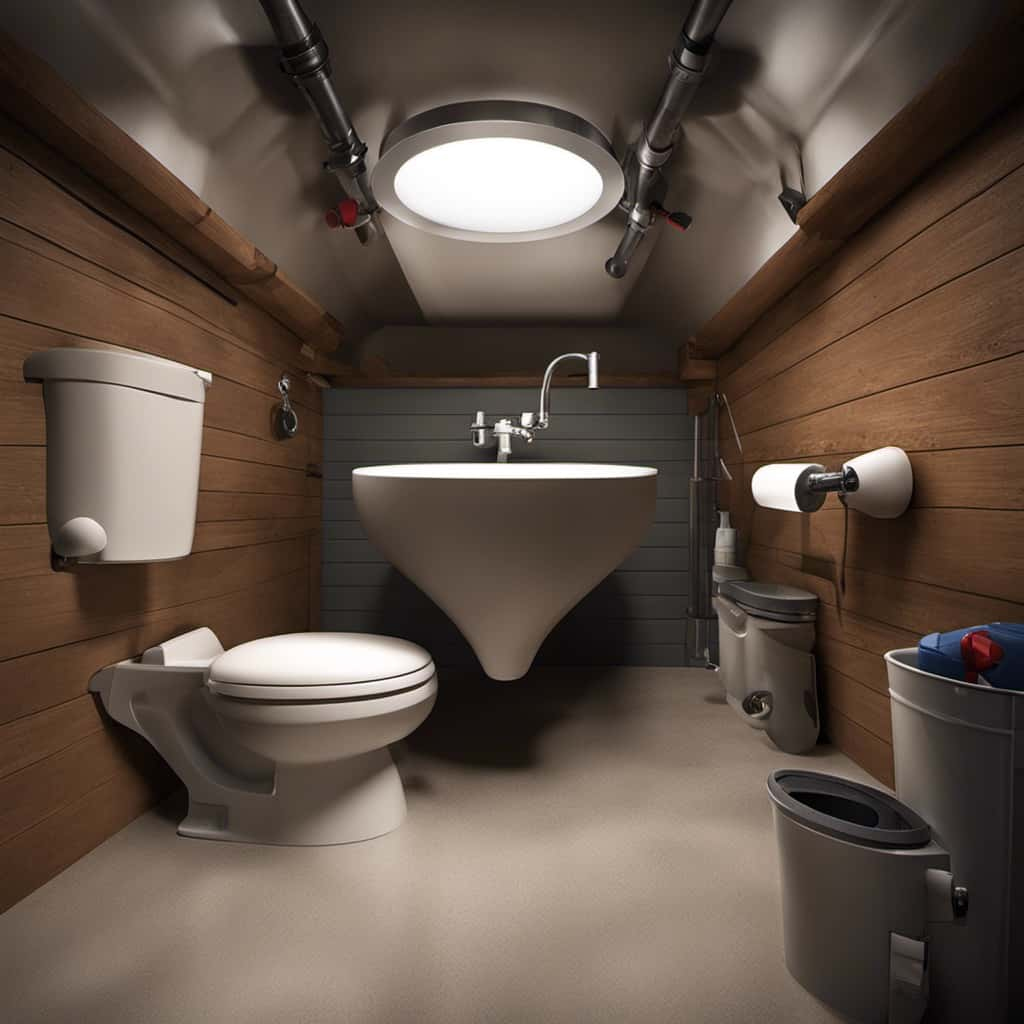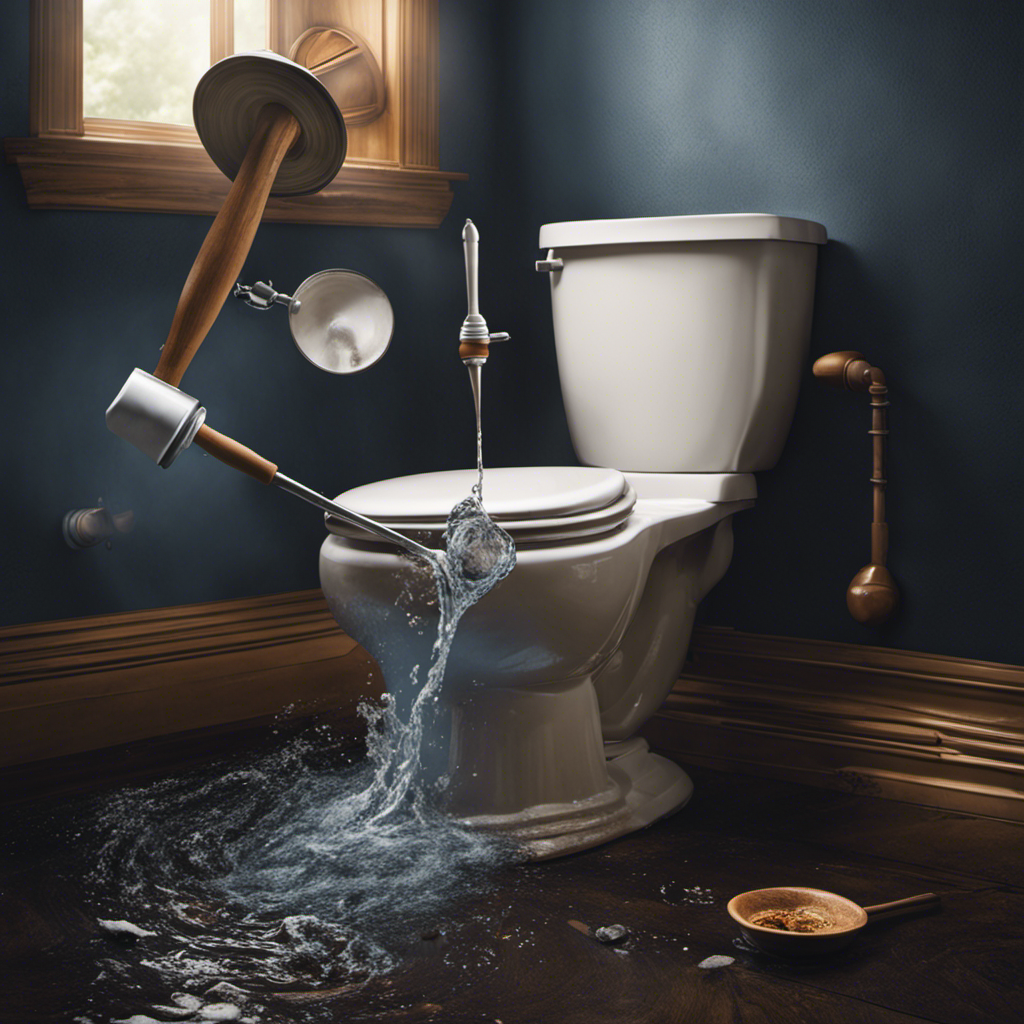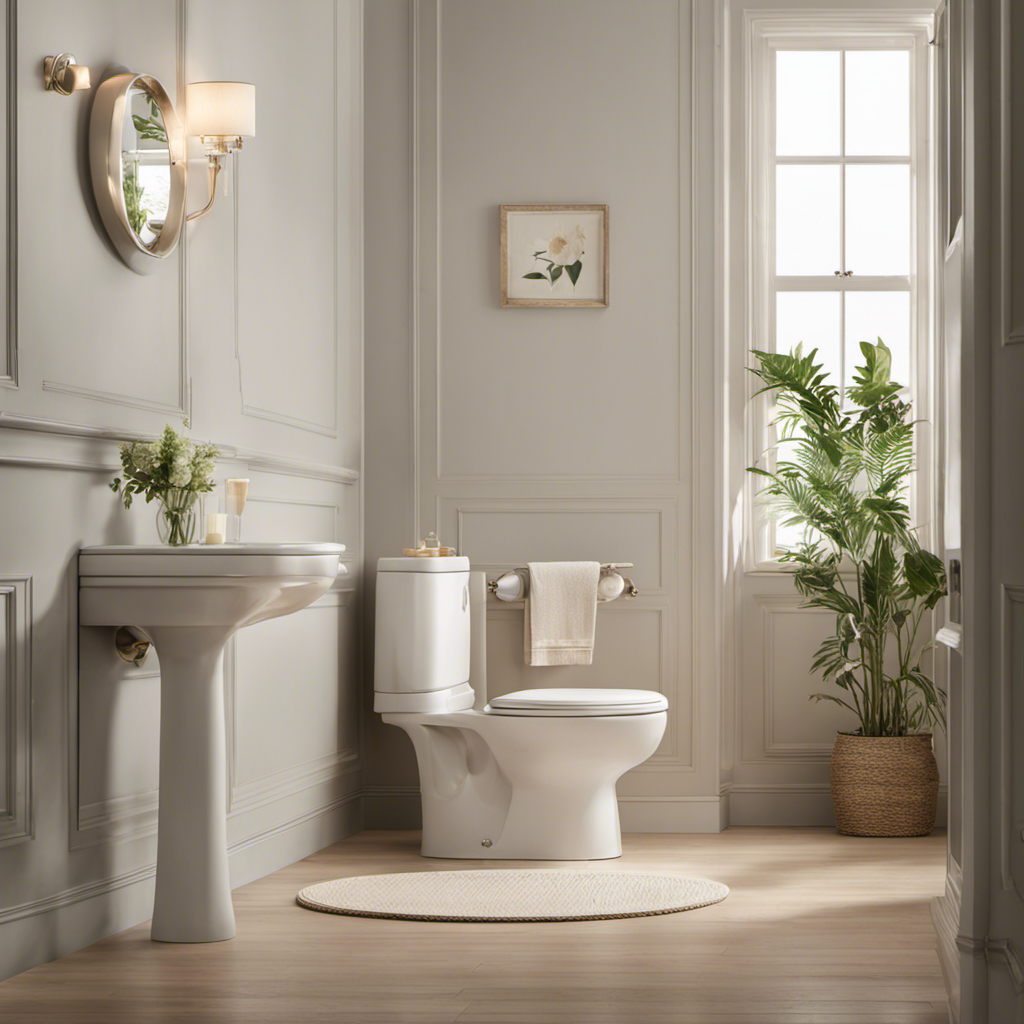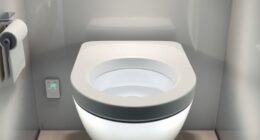Did you know that during a power outage, it is still possible to flush the toilet and take a shower?
In fact, there are alternative methods and essential hygiene practices that can help you maintain cleanliness even without electricity.
In this article, we will explore these techniques and provide you with a backup plan for future power outages.
Get ready to master the art of flushing and showering without power!

Key Takeaways
- Store at least one gallon of water per person per day for emergency situations
- Limit flushing the toilet and consider using a bucket of water to manually flush
- Use solar-powered showers or camping shower options for showering without electricity
- Prioritize water conservation, hand hygiene, and waste disposal during a power outage
Water Conservation Tips During a Power Outage
During a power outage, we can conserve water by implementing a few simple tips.
One important step is to have adequate water storage. It’s recommended to store at least one gallon of water per person per day for emergency situations. This water can be used for drinking, cooking, and hygiene purposes.
Additionally, it’s crucial to have emergency supplies such as water purification tablets or a water filter. These can help ensure that any water collected from alternative sources, such as rainwater or nearby streams, is safe to use.
Another effective way to conserve water during a power outage is to limit flushing the toilet. Only flush when absolutely necessary and consider using alternative methods, such as using a bucket of water to manually flush.
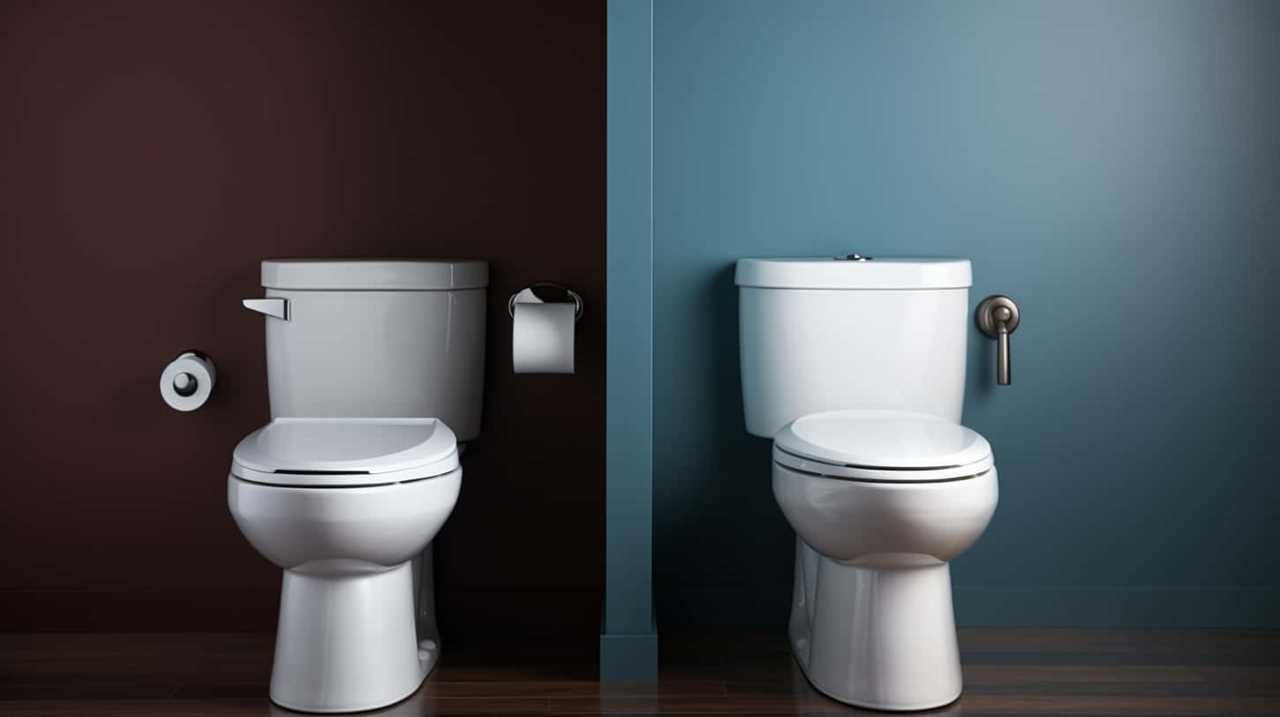
Alternative Methods for Flushing the Toilet Without Power
To flush the toilet without power, we can utilize alternative methods while considering emergency toilet solutions.
One option is to manually fill the toilet tank with water. Start by turning off the water supply valve located behind the toilet. Then, use a bucket or container to collect water from a nearby source, such as a bathtub or a large container filled with water. Carefully pour the collected water into the toilet tank until it reaches the fill line. Finally, turn the water supply valve back on and flush the toilet as usual.
Another alternative is to create a DIY hand washing station using a large container filled with water, soap, and towels. This allows for proper hygiene even without access to running water.
How to Take a Shower Without Electricity
We can still enjoy a refreshing shower even without electricity.

One option is to use solar-powered showers, which harness the power of the sun to heat up water. These showers consist of a water bag or tank that absorbs sunlight and warms the water inside. When ready, the water can be released through a nozzle or showerhead, providing a satisfying showering experience.
Another option is to explore camping shower options. These portable showers typically have a water reservoir that can be filled with water and then pressurized using a hand pump or gravity. The water is then released through a showerhead, allowing for a refreshing shower even in the absence of electricity.
Both solar-powered showers and camping showers offer viable alternatives for those seeking a showering solution without electricity.
Essential Hygiene Practices During a Power Outage
Maintaining proper hygiene is crucial during a power outage, as it ensures the well-being and health of everyone affected. Here are four essential hygiene practices to follow during a power outage:
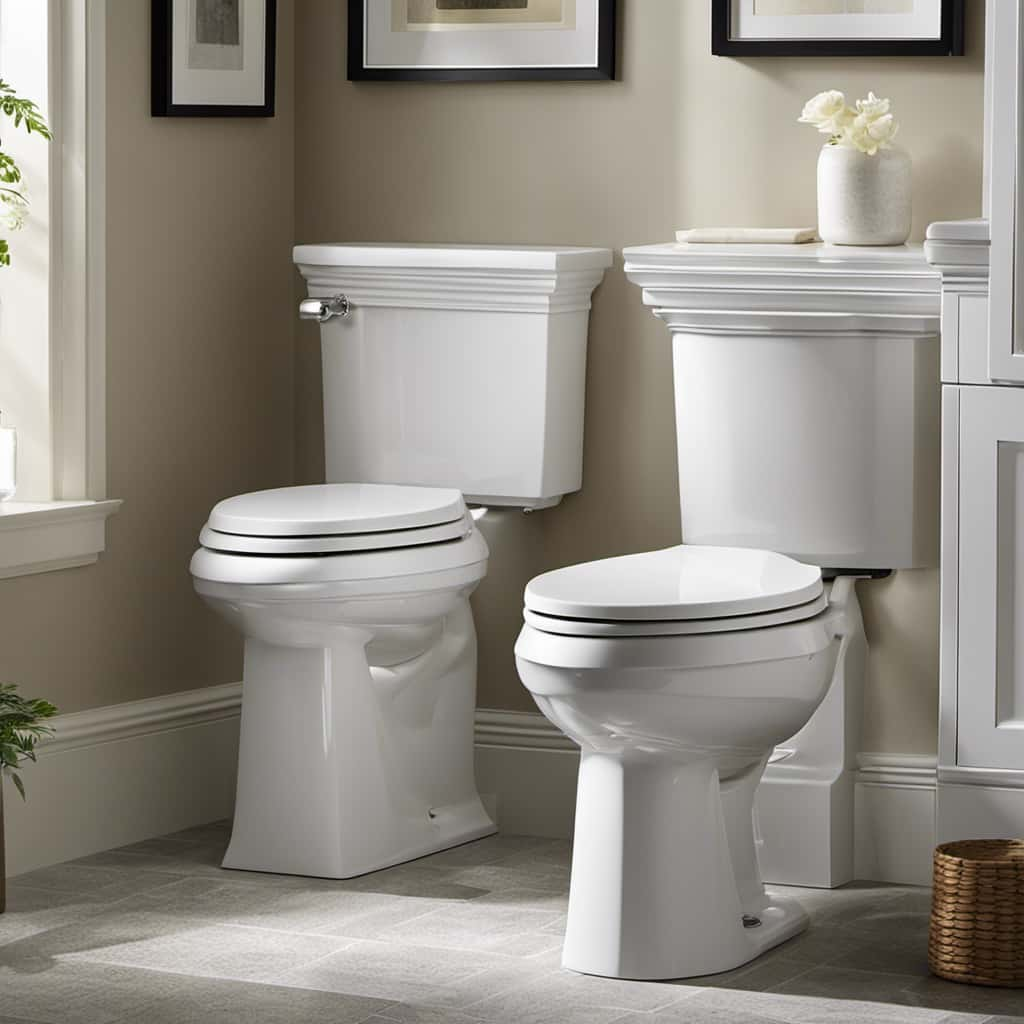
- Water conservation – In a power outage, water supply may be limited. Use water sparingly for hygiene purposes, such as washing hands and face.
- Hand hygiene – Without electricity, it’s important to prioritize hand hygiene to prevent the spread of germs. Use alcohol-based hand sanitizers or make your own with rubbing alcohol and aloe vera gel.
- Alternative bathing methods – When showers aren’t available, consider using wet wipes or a basin with warm water and soap for a sponge bath.
- Managing waste – Without functioning toilets, it’s essential to have a plan for waste disposal. Use portable toilets or line the toilet with plastic bags and dispose of waste properly.
Preparing a Backup Plan for Future Power Outages
One important step in preparing for future power outages is to create a backup plan. This plan should address two key areas: emergency lighting and cooking options.
For emergency lighting, it’s essential to have a reliable and long-lasting alternative to traditional electrical lighting. LED flashlights and lanterns, powered by batteries or solar energy, are excellent options. It’s also wise to invest in portable power banks, which can charge electronic devices and provide light for extended periods.
When it comes to cooking, having alternative options is crucial. Consider investing in a portable gas stove or a camping stove that uses propane. These options allow you to cook meals even when the power is out. Additionally, having a stockpile of non-perishable food items and a manual can opener is essential for a backup cooking plan.
Frequently Asked Questions
What Are Some Water Conservation Tips That Can Be Followed During a Power Outage?
Water saving tips during a power outage include limiting toilet flushes by only flushing solids, collecting rainwater for non-drinking purposes, and taking quick, efficient showers. Sustainable water usage ensures we conserve resources and minimize waste.

Are There Any Alternative Methods for Flushing the Toilet Without Power?
Yes, there are alternative methods for flushing the toilet without power during a power outage. We can use a bucket of water to manually flush the toilet, ensuring we maintain sanitation even without electricity.
How Can One Take a Shower Without Electricity?
Solar powered showers use the sun’s energy to heat the water, allowing us to take showers even without electricity. Additionally, there are waterless bathing methods available that use special products to freshen up without the need for water.
What Are Some Essential Hygiene Practices to Follow During a Power Outage?
During a power outage, it is crucial to prioritize hygiene practices. To conserve water, we must limit flushing and showering. Utilize alternative methods like using hand sanitizer and wet wipes to maintain cleanliness.
How Can One Prepare a Backup Plan for Future Power Outages?
Backup power sources are crucial for preparing a plan for future power outages. We can rely on generators or solar power to ensure uninterrupted electricity. Additionally, emergency water storage is essential for maintaining hygiene during such situations.
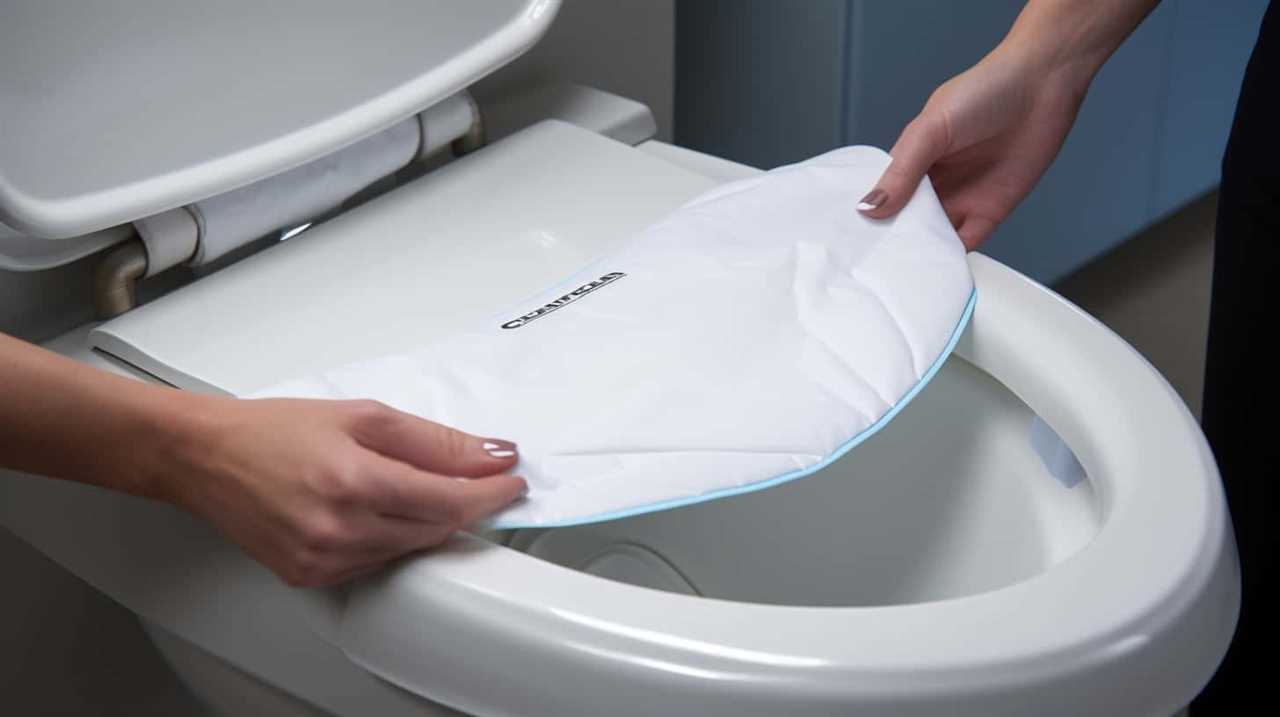
Conclusion
In conclusion, it may seem impossible to flush and shower without power, but with the right alternative methods and a little creativity, it can be done.
From using buckets of water to gravity-powered showers, there are options available to maintain basic hygiene during a power outage.
So, next time you find yourself in the dark, don’t fret about staying fresh and clean – just remember to embrace the irony of needing electricity for a basic necessity like water.

